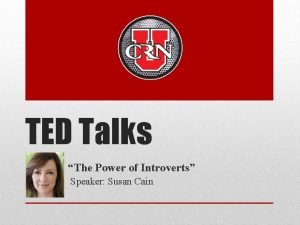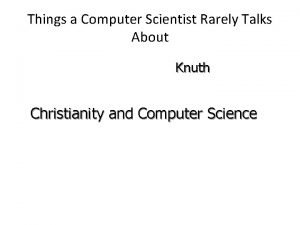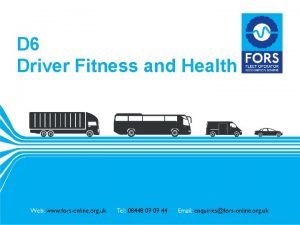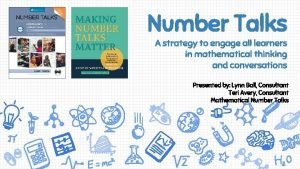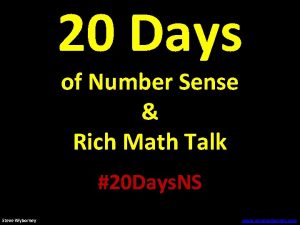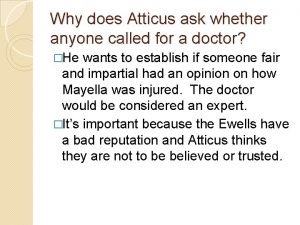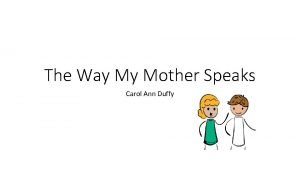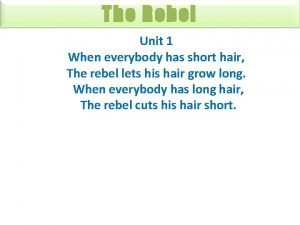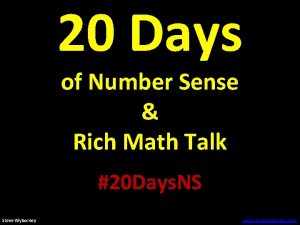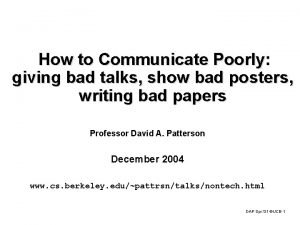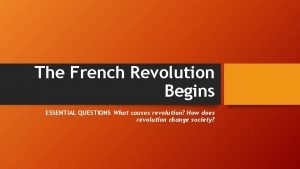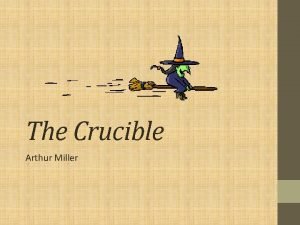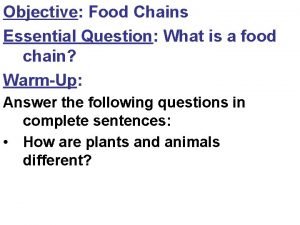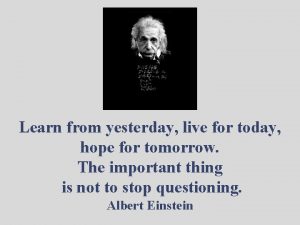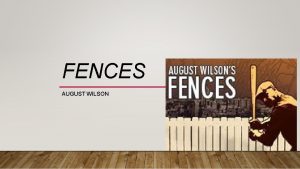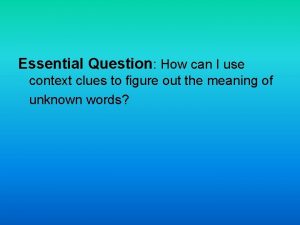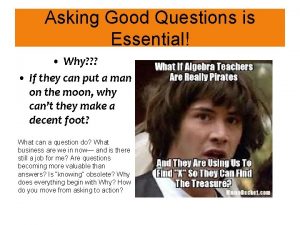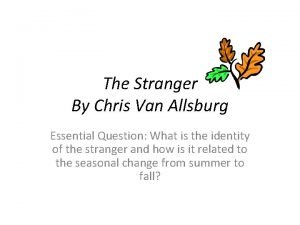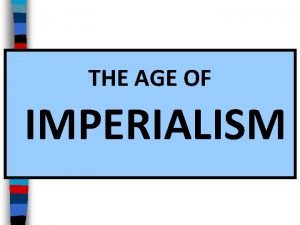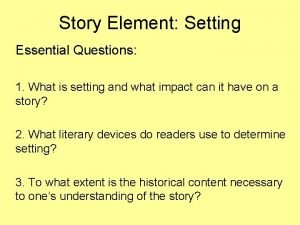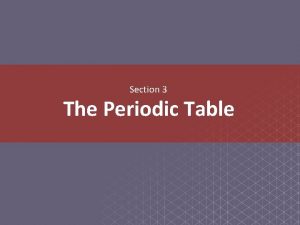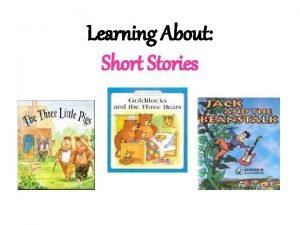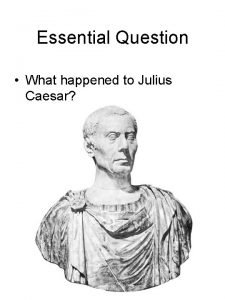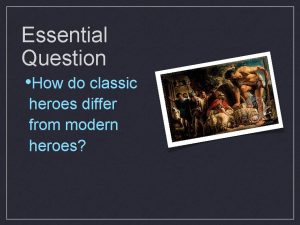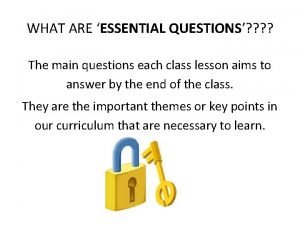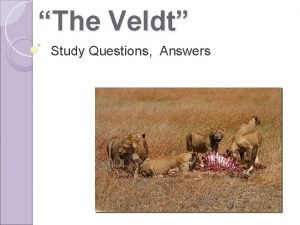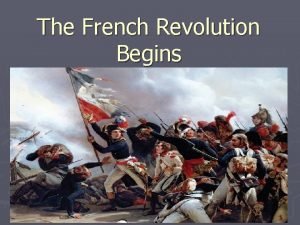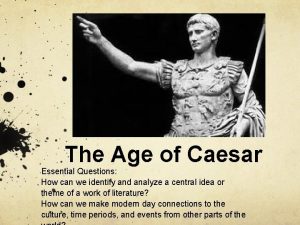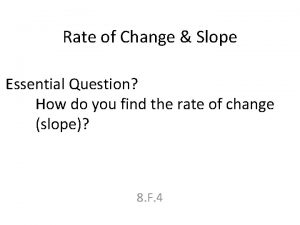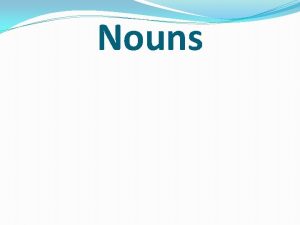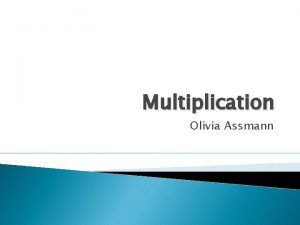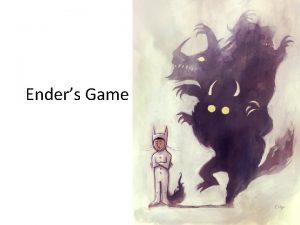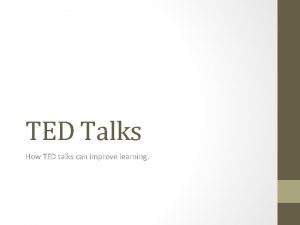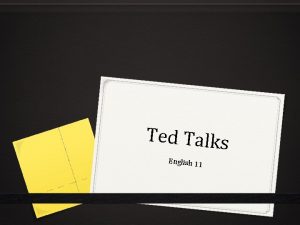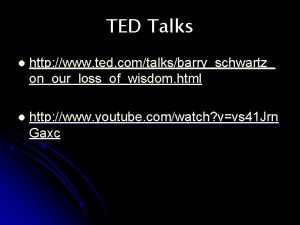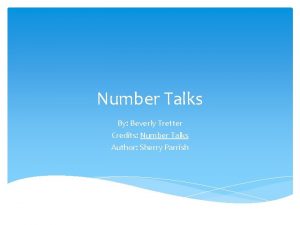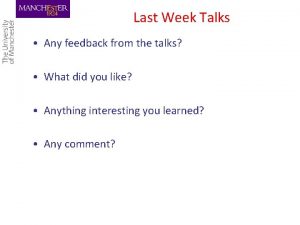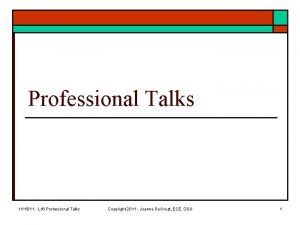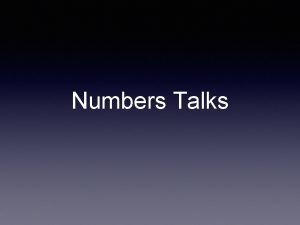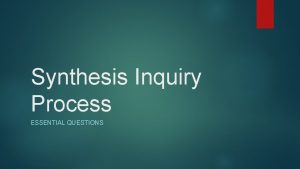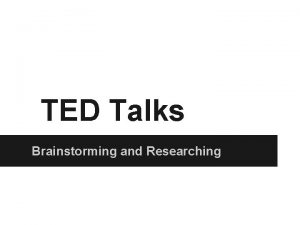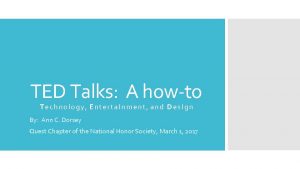Unit 9 TED Talks Essential Questions How do













































































- Slides: 77

Unit 9: TED Talks Essential Questions: How do I use my voice or identity to influence or shape society? How do we best spread great ideas?

DAY ONE: OVERVIEW OF TED TALKS & UNIT

FREEWRITE: Let’s start thinking of great ideas. . . Take 5 minutes to quietly reflect and respond to the following questions. 1. What’s one assumption I’d like to challenge? 2. What’s a belief of mine that has changed, and why? 3. What does everyone miss when they think about my area of interest or expertise?

Read: History of TED Talks & discuss the following questions. 1. When did TED first begin? 2. What is TED’s goal? 3. Why do you think TED finally took off in 1990?

Basic Elements of a TED Talk: 1. Use of rhetorical appeals - ethos, logos, pathos. 2. Novel or interesting story & storytelling. 3. Keep it to 18 minutes or less. Why 18 minutes or less? ? Read: The Science Behind TED’s 18 -minute rule. Discuss: What are 3 reasons the 18 minute rule works for TED talks? Why?

Review of Rhetorical Appeals: rhetoric: the art of speaking or writing effectively Ethos: this appeal relies on the speaker’s reputation, experience, education, and/or character. Logos: this appeal rests on the speaker’s use of logic, solid reasoning, statistics, facts, etc. Pathos: this appeal is intended to evoke emotion, empathy, sympathy and drives action. Using a balance of all of these appeals makes for effective (and ethical) communication. Aristotle called these appeals the rhetorical triangle.



The first (of many) TED Talks… “How to speak so that people want to listen” by Julian Treasure


DAYS TWO-FOUR: DECONSTRUCTING TED TALKS

Over the next several days we will be watching a sampling of popular TED Talks. Choose ONE each day to focus your analysis & fill out the provided handout.

Passion: Day 2

Rita Pierson: Every Kid Needs a Champion

Elizabeth Gilbert: Your Elusive Creative Genius

Shane Koyczan: To This Day

Sarah Kay: If I Should Have a Daughter

Matt Cutts: Try Something New for 30 Days

Candy Chang: Before I Die

Journal Reflection: Please respond to one or both of these quotes. “Be the flame, not the moth. ” ― Giacomo Casanova “Passion has little to do with euphoria and everything to do with patience. It is not about feeling good. It is about endurance. Like patience, passion comes from the same Latin root: pati. It does not mean to flow with exuberance. It means to suffer. ” ― Mark Z. Danielewski, House of Leaves

The Power of Story: Day 3

Bryan Stevenson: We Need to Talk About an Injustice

Tim Urban: Inside the Mind of a Master Procrastinator

Simon Sinek: Start With Why

Sir Ken Robinson: Do Schools Kill Creativity?

Taylor Mali: What Teachers Make

Shawn Anchor: The happy Secret to Better Work

Journal Reflection: Please respond to one or both of these questions 1. Recall the best story you’ve ever heard. What made that story so captivating? What was included? What wasn’t included? How was the story told? 2. Why do we like to listen to and/or tell stories? Can anyone tell a good story - can it be learned, or is it an inherent talent?

Teach Me Something New: Day Four

Derek Sivers: How to Start a Movement

James Veitch: This is What Happens When You Reply to Spam

Keith Barry: Brain Magic

Bill Gates: Mosquitoes, Malaria, and Education

Cameron Russell: Looks Aren’t Everything. Believe Me, I’m a Model.

Amy Cuddy: Your Body Language Shapes Who You Are

Kevin Allocca: Why Videos Go Viral

Robert Waldinger: What Makes a Good Life?

Journal Reflection: Please respond to one or both of these questions 1. How do you teach something so that people remember? 2. In your opinion and experience, what 3 elements are crucial to make teaching a concept or idea effective?

DAY FIVE: THE ART OF TELLING A GOOD STORY (HUMOR)

Elements of Comedy “It’s funny, because it’s true. ” 4 Basic Elements: ➔ Character ➔ Situation ➔ Language ➔ Delivery

Element #1: Character

Setting up Character: Rule #1: Focus on the specific. ● physical features (height, hair color, etc. ) ● personality traits (optimistic, generous, etc. ) ● behavioral characteristics (neat freak, careful driver, etc. )

Setting up Character: Rule #2: Show don’t tell (give an example). ● exaggerate (slightly) ● remember tone (do you want people laughing with your character or at them? )

Setting up Character: Example of indirect characterization to describe character: “She couldn’t walk past a Swiffer without feeling the deep need to run its felty fingers over a dusty shelf. ” (neat freak)

Element #2: Situation

Option #1: Predicament Your character finds themself in a problem that needs to be solved.

Predicament: ● Keep in mind the situation doesn’t need to be crazy. ● The conflict is more focused on how the CHARACTER reacts or functions in the situation.

Predicament Examples: ● Two stereotypically nerdy kids want to buy beer before a high school party (Superbad). ● A girl tries to set up her best friend with a mutual friend and instead ends up getting asked out by the friend she is trying to set her best friend up with.

Option #2: Ludicrous Situation Your character finds themself in a situation which seems impossible or unlikely.

Ludicrous Situation: ● The situation usually compounds as the story progresses. ● Examples for this transition: “As if that wasn’t enough… “It seemed at this point that things were as bad as they were going to get. ” ● Character is LESS IMPORTANT than what is happening to them. ● The actual events don’t need to be funny, it’s more about the build up, and people’s reactions.

Ludicrous Situation Examples: ● Kid gets left alone at home while the rest of the family goes on vacation. The house gets broken into by incompetent burglars (Home Alone). ● Trying to drive the kids to swim lessons, there’s an accident on the major road, so Mom takes a side route and runs into a costume 5 k where everyone is dressed like Waldo, when she tries a 3 rd route it’s blocked by a police chase over a bridge.

Option #3: Ironic Consequences Your character finds themself in a situation where what happens is the exact opposite of what they expect.

Ironic Consequences: ● Similar to the Ludicrous Situation (in that the situation may be outrageous) but doesn’t necessarily compound. ● Instead the focus is on juxtaposition between what your characters expect to happen versus what actually happens.

Ironic Consequences Examples: ● While trying on wedding dresses, the entire bridal party experiences adverse health effects from food poisoning (Bridesmaids). ● Aunt hugs bride, and when bride starts to walk away, her foot is on the dress, ripping it. Aunt pulls out some dental floss and offers to sew dress.

Element #3: Comic Language

Example #1: One-Liners “My love is like a candle: if you forget me, I will burn your house down. ” ● element of surprise ● helpful to establish character

Example #2: Puns “I decided to learn sign language because I thought it would be handy. ” ● deliberately cheesy ● delivery is important (often follow the pun with a pause)

Example #3: Hyperbole “I will literally die if my parents find out about this. ” ● the more exaggeration, the better ● the key is juxtaposition: acting like the stakes are super high when actually they’re fairly low

Example #4: Repetition “Did you get it? ” ● could be some kind of catch phrase ● could connect different parts of a narrative

Element #4: Delivery

Technique #1: Dramatic. . . Pause. “Wait for it!” ● actually take a breath or count to 2 in your head ● use sparingly

Technique #2: Do you hear voices? ● give your characters different voices - but don’t go overboard - you don’t want to be annoying ● exaggerate characteristics for comedic effect

Technique #3: Pace & Volume ● hopefully selfexplanatory ● choose places to speed up and places to slow down ● choose places to get louder and places to speak quietly

The Art of Telling a Good Story: Assignment - Mini Comedic Speech Assigned: 5/3 Due: 5/9 & 5/10 ● Goals: ○ ○ ○ To develop a 3 -5 minute speech. To use comedic techniques to tell a captivating story. To effectively apply delivery techniques to keep the audience interested.

Brainstorm Ideas:

One of the most exciting, interesting, hilarious, adventurous, exhilarating, mind-boggling, absurd, unfortunate, odd, etc. experiences of my life was when. . .

Outline your Mini Comedic Speech (approx. 500 -600 words) *essentially a transcript of your speech in outline form 1. Hook & Beginning a. Establish setting & character(s) & introduce conflict 2. Middle a. Develop conflict(s) 3. End & Memorable Ending Line a. Provide conclusion and/or epiphany (realization, awareness, feeling of knowledge that results in seeing events in a new light)

Comedic Speeches - Self Reflection Please take 10 minutes to thoughtfully reflect on your mini comedic speech. Turn in your reflections when completed.

Brainstorm Topics/Ideas for Your TED Talk:

TED Talk Speaker Guide: 1. Get familiar with the form. 2. Develop an idea. 3. Make an outline and script. 4. Create slides or visuals. 5. Rehearse. 6. Give your talk. 7. Savor the glory.

DEVELOP AN IDEA 1. What makes a good idea for a talk? a. Can be new or surprising, or challenge a belief your audience already has. Or it can be a great basic idea with a compelling new argument behind it. b. A good idea takes evidence or observations and draws a larger conclusion. 2. Do I need to be an expert on my topic? a. Yes. Give accurate information, fact check, do research, consult with experts directly. 3. Is my idea ready? a. Write your idea down in 1 -2 sentences. Ask yourself 3 questions: i. Is my idea new? ii. Is it interesting? iii. Is it factual and realistic? - do your research!

MAKE AN OUTLINE AND SCRIPT Here is one structure that generally works well: 1. Start by making your audience care, using a relatable example or an intriguing idea. 2. Explain your idea clearly and with conviction. 3. Describe your evidence and how and why your idea could be implemented. 4. End by addressing how your idea could affect your audience if they were to accept it.

Whatever structure you decide on, remember… 1. The primary goal of your talk is to communicate an idea effectively, not to just tell a story or to evoke emotions. These are tools, not an end to themselves. 2. Your structure should be invisible to the audience. In other words, don’t talk about how you’re going to talk about your topic - just talk about it!

Writing Your Introduction: DO: Draw in your audience with something they care about & get your idea out as quickly as possible. If it’s a topic your general audience would think about a lot, start with a clear statement of what the idea is. If it’s a field they never think about, start by relating it to something they are familiar with. If the idea is something fun, but not something your audience would be familiar with, open with a cool or surprising fact (not a statistic!). If it’s a heavy topic, find an understated and honest way to introduce it - don’t force people to feel emotional. DON’T: focus too much on yourself or open with a string of stats.

Writing Your Body: DO: Make a list of all evidence you want to use - think about items that your audience already knows about and the things you’ll need to convince them of. Spend more time on new information - if your audience needs to be reminded of common or old information, be brief. Use empirical evidence, and limit anecdotal evidence. Don’t use too much jargon, or explain new terminology. Respectfully address any controversies in your claims, counter arguments, reasons you may be wrong, doubts your audience might have about your idea. DON’T: let citations interrupt the flow of your explanation: save them for after you’ve made your point or put them in the fine print of your slides.

Writing Your Conclusion: DO: Find a landing point in your conclusion that will leave the audience feeling positive toward you and your idea’s chances for success. Tell your audience how your idea might affect their lives if it’s implemented. If appropriate, give your audience a call to action. SCRIPT - once you’ve settled your outline, start writing a script. Be concise, but write in a way that feels natural to you. Use present tense and strong, interesting verbs. DON’T: use your conclusion to simply summarize what you’ve already said Avoid ending with a pitch - such as soliciting funds, showing a book cover, etc.

Should I Use Slides? Pros - Cons - Can be helpful for the audience in clarifying information Text can be distracting Can illustrate a point you are trying to make or provide humor Can help the audience remember a person, place or thing you mention Can help provide evidence - graphs, etc. Can take away from the flow of your speech Can make the speaker rely too heavily on the presentation and less on delivery
 Ted talk the power of introverts
Ted talk the power of introverts Ted talks
Ted talks Essential questions poetry
Essential questions poetry Essential non essential fatty acids
Essential non essential fatty acids Things a computer scientist rarely talks about
Things a computer scientist rarely talks about Www.fors-online.org.uk
Www.fors-online.org.uk Biografia em inglês atividades
Biografia em inglês atividades Rekenrek number talks
Rekenrek number talks Number talks hand signals
Number talks hand signals Nissim ezekiel night of the scorpion
Nissim ezekiel night of the scorpion Talk to along
Talk to along Steve wyborney 20 days of number sense
Steve wyborney 20 days of number sense Why does atticus ask bob ewell to write his name?
Why does atticus ask bob ewell to write his name? What can run but never walks has a mouth
What can run but never walks has a mouth The way my mother speaks annotated higher
The way my mother speaks annotated higher When everybody has short hair the rebel
When everybody has short hair the rebel Your friend talk/talks too much
Your friend talk/talks too much Microsoft tech talks
Microsoft tech talks 20 days of number sense
20 days of number sense Microsoft tech talks
Microsoft tech talks Bad talks
Bad talks Hock lee bus riots summary
Hock lee bus riots summary Driving at work toolbox talk
Driving at work toolbox talk Citb toolbox talks noise
Citb toolbox talks noise Unit 6 review questions
Unit 6 review questions Facts about westward expansion
Facts about westward expansion Language
Language Essential questions for the renaissance
Essential questions for the renaissance The pythagorean theorem
The pythagorean theorem French revolution essential questions
French revolution essential questions Enlightenment essential questions
Enlightenment essential questions The crucible essential questions
The crucible essential questions Persepolis discussion questions
Persepolis discussion questions Food chain warm up answer key
Food chain warm up answer key Non essential questions examples
Non essential questions examples Into the wild chapter 1 questions
Into the wild chapter 1 questions Questions to ask malala
Questions to ask malala Hamlet socratic seminar questions
Hamlet socratic seminar questions Essential questions for geometry
Essential questions for geometry Fences essential questions
Fences essential questions Stabilizing selection
Stabilizing selection Essential context clues
Essential context clues Ubd essential questions
Ubd essential questions Essential question for pythagorean theorem
Essential question for pythagorean theorem Essential question definition
Essential question definition Nonfiction essential questions
Nonfiction essential questions Weathering and erosion essential questions
Weathering and erosion essential questions Chris van allsburg the stranger
Chris van allsburg the stranger Imperialism ideology
Imperialism ideology Tell-tale heart essential questions
Tell-tale heart essential questions Essential questions for story elements
Essential questions for story elements Periodic table essential questions
Periodic table essential questions Mental health essential questions
Mental health essential questions Short story essential questions
Short story essential questions Essential questions for julius caesar
Essential questions for julius caesar Essential questions about heroes
Essential questions about heroes Water cycle essential questions
Water cycle essential questions Characterization essential questions
Characterization essential questions Essential questions about stereotypes
Essential questions about stereotypes Essential questions for inferencing
Essential questions for inferencing Essential questions for figurative language
Essential questions for figurative language The veldt graphic organizer answers
The veldt graphic organizer answers Essential questions for the renaissance
Essential questions for the renaissance Industrial revolution essential questions
Industrial revolution essential questions The french revolution begins
The french revolution begins Julius caesar essential questions
Julius caesar essential questions Sub+verb+object
Sub+verb+object Lord of the flies socratic seminar
Lord of the flies socratic seminar Romeos friend
Romeos friend Lesson 3-1 rational numbers and decimals answer key
Lesson 3-1 rational numbers and decimals answer key Rise over run
Rise over run Questions about nouns
Questions about nouns Essential questions for multiplication
Essential questions for multiplication Essential questions about mental health
Essential questions about mental health Essential questions opening doors to student understanding
Essential questions opening doors to student understanding Reconstruction essential questions
Reconstruction essential questions Renaissance art questions
Renaissance art questions Ender's game essential questions
Ender's game essential questions
